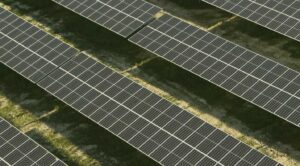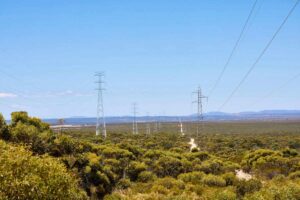A new study from investment bank UBS says solar plus storage already make economic sense for Australian households, a finding that could dramatically reshape the nature of the energy industry in the country.
The new report suggests that one million households could invest $20 billion in storage systems in current years – nearly equal to the investment required for a new LNG export plant.
According to UBS would be relatively low risk. More importantly, it would herald a revolution in the domestic electricity industry.
UBS says the arrival of cost-competitive solar plus storage will have major impacts on utilities, depending on how they react. They could see it as an opportunity – and provide zero-down installations of battery storage and solar to their customers and help the costs come down even quicker for Australian households.
Or they could see it as a threat, and leave the way open for others to do the same.
The UBS analysis looked at the price of current solar plus storage offerings in Australia. It estimates that such systems – which allow households to use all the electricity produced by their solar array by storing it in a box (battery) for later use – are already offering a return of capital of 10 per cent a year or more compared to buying power from the grid.
It commissioned consulting firm GSES to look at systems that comprised 5kW of rooftop solar and 5kWh of battery storage. At $18,000, some of these systems were already economic.
“The cheapest system looked at is already capable of earning its cost of capital,” the team led by UBS utilities analyst David Leitch says.
More significantly, there is clear potential for dramatic cost reductions in coming years, in much the same way that the cost of solar panels plunged so dramatically over the last five years.
UBS says this will happen just by bringing the battery sales price down to those that are already available in the US, scaling production of battery housings, battery management systems and energy monitoring (Australians currently pay four times the price in the US for some battery management systems), and integrated manufacturing of components including inverters.
It suggested that Australian consumers were being overcharged compared to the US. And offered this comparison as an example.
The study is a follow-up to a report in May, where UBS predicted that households in the major cities of Australia could find it cheaper to go off-grid rather than stay connected. Another report in August suggested the time was right for a solar plus storage plus electric vehicle revolution.
Those reports sparked a huge reaction, and prompted UBS to look a what technologies are available now, not necessarily to go off-grid, but to maximise the amount of self-consumption.
The Australian Energy regulator recently flagged that Australia will likely be witness to the rise of “prosumers” who will create an “energy revolution” who will generate their own electricity and store for use at a later time. This so-called “democratisation” of the grid will have a major impact on the decades-old centralised business models based around large coal fired power stations and huge networks of poles and wires.
We liked this explanation from UBS as to why solar plus storage is so compelling in Australia:
“Solar’s differentiation compared to virtually all other forms of generation is that its generation costs are invariant to scale. It’s just as cost-effective whether it’s scaled to run a torch or a city. In addition the fuel source is mostly available at the point of consumption. This means the only real constraint on where solar is situated is having enough space for the panels.
There is no noise, no moving parts to wear out. These attributes are why it so well suited to Australian detached housing, or for that matter, the commercial and government sectors. Virtually the only disadvantage of solar is that the sun only hits the panels for a limited number of hours per day.
That’s where the storage comes in. The battery’s function is to ensure most of the solar power can be used in the house and nothing is sold back to the grid.
Until recently, and even today, storage has neither been consumer friendly (lead acid batteries are heavy and require relatively large amounts of space) and relatively expensive. However Lithium Ion batteries are changing that; their costs are falling sharply, maybe 10% or more per year in $US terms. Li-Ion batteries have other consumer friendly advantages, they are much lighter, take up less space, can be virtually fully discharged at a constant voltage, and hold charge for extended periods of time. “
UBS suggests that Australians are currently paying around double for the same battery storage than in the US. “Australians are paying around a 100% premium on this basis even for a “do it yourself system”,” it says. It says that’s partly to blame on the “cottage industry” nature of the business in Australia.
 Australians are paying around $780/kWh for storage compared to $US360/kWh for comparable systems in the US. In some instances, such as the Sony system, the premium is four times the price of automotive battery packs in the US, which it notes are heading down towards $100/kWh within 10 years.
Australians are paying around $780/kWh for storage compared to $US360/kWh for comparable systems in the US. In some instances, such as the Sony system, the premium is four times the price of automotive battery packs in the US, which it notes are heading down towards $100/kWh within 10 years.
“In our view the higher prices in Australia reflect the relative bargaining power of buyers and sellers. If a major electricity retailer or new entrant was to move aggressively into this space we think that Australian prices for household storage would fall to or below international auto battery prices.
“Ultimately household storage requires a lower materials cost LiFePO4 battery so all up cost should be less.
For time being as the volume of devices sold into the household storage market is tiny, and because there is no large scale retailer actively promoting the products, then neither is there the catalyst to bring costs down to even the present global level.
So how does it work? Basically, the battery storage allows households to store their output from solar systems in a box for use later. That means that they don’t export back into the grid at the desultory offer of around 6c/kWh (only to see the retailer sell the same electrons to the neighbour for up to 9 times the price), and can avoid buying electricity at peak times.
Ignoring fixed network charges – the wild card in these equations, as we noted here in our Solar Shocker story – this could deliver big savings. This graph is based on a 4kW solar system and 5kWh of battery storage.
“Based on this set of parameters the daily electricity bill without solar and battery and also ignoring the fixed annual connection charge is around $5.60 or $2044 per year,” the UBS analysts say. “By contrast with the solar and battery the net revenue is around $0.43 per day or $157 per year for a net gain of $2200 per year. “
UBS says that even if 1 million battery storage systems are solar in Australia – there are already 1.4 million rooftop solar systems – that would represent a $20 billion investment, equal to 2/3 of an LNG plant’s cost.
“The investment is relatively low risk because the investment tap can be turned up or down quickly. An Australian utility might build up its own branded systems, and sell them “zero down-payment”,” it suggests.
“If our numbers are correct someone will likely do it. For the time being we think that incumbent utility management will likely see this as more of an Annual Report photo opportunity rather than a potentially major P&L (profit and loss) line item. As such for incumbents it’s arguably more of a threat than an opportunity.”
For this interested in the UBS cost estimates. It says the lowest cost system for 5KW + 5KWh LiIo battery is $18,000 with SREC benefit and provides about a 10 per cent internal rate of return compared to buying power from the grid.
“Analysis of the lowest cost system shows that large cost reductions seem possible. The battery itself is about twice the US cost for EV batteries. The battery balance of system [BOS] costs range from $2500 to $5500. We can see scope for taking $100s if not $1000s out of that cost. EG the cheapest battery management system is over $600 in Australia, and in the USA it’s $150. Suppliers such as Bosch are charging large premiums for integrated systems when the underlying costs should be substantially less.
It says global cost reductions offer further opportunities. Battery costs could fall from 2014 levels of US$360/KWh (capacity) to US$200/KWh by 2020. “By comparison the cheapest quote we received in Australia was $784 KWh. Solar costs are expected to fall around 20-25 per cent over the next few years based on a 20 per cent reduction for a doubling of volumes. Systems integration and mass production should see other costs fall as well. The outlook for inverters is less clear, partly due to a technology fork in the road.”
And here is one graph that shows how the high and Bosch system could fall in price over coming years, mostly through a reduction in battery and hybrid systems.











